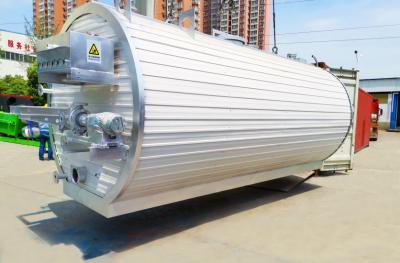Experts: conditions are becoming ripe for a return to Category B management of new coronavirus prevention and control
After nearly three years of global epidemic, the new coronavirus is becoming less pathogenic. In response, China's prevention and control measures have been adjusted and are being reduced at every level.
Over the past few days, there have been intensive adjustments to the prevention and control measures for New Coronavirus pneumonia in many parts of China, including the removal of strict nucleic acid code testing, reduction in the frequency of nucleic acid, narrowing of the high-risk delineation, close contact for eligible and special circumstances for confirmed cases at home, and other measures. The strict Category A measures for the prevention and control of infectious diseases, which have been in place since the beginning of 2020, are being unbundled. Against the requirements of infectious disease control, the current prevention and control measures are also reflecting the characteristics of category B management.
So, are the epidemiological features of the current new coronavirus eligible for removal from Category A management? Is it appropriate to return to Category B infectious disease management?
It has been almost 3 years since Category B A management
On 20 January 2020, the National Health Commission issued Announcement No. 1 stating that, according to the relevant provisions of the Prevention and Control of Infectious Diseases Law, and based on the understanding of the etiology, epidemiology, clinical features and other characteristics of the novel coronavirus-infected pneumonia at that time, the approval of the State Council was reported and agreed that the novel coronavirus-infected pneumonia would be included in the management of statutory infectious disease category B, and the preventive and control measures of category A infectious diseases would be adopted. Pneumonia with novel coronavirus infection is included in the management of statutory infectious diseases, and people's governments at all levels, health and health administrative departments, other government departments, and medical and health institutions may take a series of preventive and control measures such as isolation and treatment of patients and isolation of close contacts for medical observation, in accordance with the law, to jointly prevent and control the spread of the pneumonia with novel coronavirus infection.
"The main basis of the infectious disease management model comes from the infectiousness and pathogenicity of infectious diseases." An infectious disease expert told Firstrade that for infectious diseases that are highly pathogenic, have a high death rate and are highly contagious, they are generally classified as Class A or Class B Class A management, with control measures generally being taken such as mandatory quarantine and blockade of infected areas; for infectious diseases that have a high incidence rate, cause a high death rate, but have a limited ability to spread and cause some harm to society, they will be classified as Class B; for infectious diseases that are highly contagious, have a weak pathogenicity and a low death rate The virus is generally classified as category C.
However, as the new coronavirus continues to mutate, the clinical characteristics of the currently prevalent strain of Omicron are gradually being recognised, and numerous scientific studies and real-world data show that it is progressively more infectious, but less pathogenic and less deadly. As a result, the level of management has to be reconsidered.
In view of the current epidemiological characteristics of the new coronavirus, the aforementioned infectious disease expert said that many places show that over 95% of infected people are asymptomatic and mildly ill, with a low mortality rate, and in such a situation, it is clearly not scientific to continue to manage it under category A. Therefore, it will become possible to return the new coronavirus to category B management or even downgrade it to category C.
Jiao Yahui, director of the National Health and Wellness Commission's Medical Administration, had said at a press conference on March 19 on the State Council's joint prevention and control mechanism that the main prevalent strain in the current round of the epidemic was the Omicron variant, and that as of 24:00 on March 18, there were a total of 29,127 infections in hospital nationwide. In terms of illness, light and asymptomatic cases predominated, accounting for more than 95% of the cases. Serious illnesses, including heavy and critical types, accounted for less than 0.1%.
In the current round of the epidemic, the proportion of asymptomatic infections remains high, and at a press conference in Guangzhou on December 2, Zhang Yi, deputy director and spokesman of the Guangzhou Municipal Health and Wellness Commission, informed that the city had reported 162,700 cases of new pneumonia indigenous infections in the current round, with asymptomatic infections accounting for about 90% of the total number of infections and only four cases of severe and critical illnesses, with no fatal cases.
At a press conference on the State Council's joint prevention and control mechanism held on November 28, Chang Zhaorui, a researcher at the CDC's Transmission and Prevention Division, said that international and domestic surveillance data confirmed that the pathogenicity and virulence of the Omicron variant and its evolutionary offshoots BA.1, BA.2 and BA.5 series, including BF.7, BQ.1 and the recombinant XBB, are significantly weaker than those of the original strain and the delta variant. Foreign studies have shown that the Omicron variant causes significantly lower rates of severe disease and death than the previous original strain and the variant of concern. "This is both a characteristic of the Omicron variant strain and may also be related to factors such as improved immunisation levels in the population with vaccination and timely interventions for treatment, with our new crown of serious illness and its associated deaths at a low level, which is related to our proactive prevention strategy and co-ordination of quality treatment efforts." Chang Zhaorui said.
A press conference on the State Council's joint prevention and control mechanism was held on November 29. Photo by Xinhua News Agency
"It is clear that the pathogenicity of the current epidemic strain is relatively weak, and under the condition that basic immunisation has been completed nationwide, management under category B is no longer a problem. Returning to category B management can also provide a certain legal basis for further optimising prevention and control measures in the future, so that there is a law to follow." The infectious disease expert mentioned above said.
Taking small steps without stopping, taking the initiative to optimise and improve prevention and control policies
In the past three years, China's prevention and control measures have been in a state of optimisation, as Mi Feng, a press statement of the National Health Commission, said at a press conference on November 29 at the State Council's Joint Prevention and Control Mechanism, that since the outbreak, the Chinese government has been preventing and controlling, researching, summarising and adjusting according to the characteristics of virus mutations and practical understanding of clinical treatment. In response to the characteristics of the transmission and pathogenicity of the mutated strain of Omicron, as well as the rate of serious illness and mortality, including close attention to some changes in the international epidemic situation, we have been studying and constantly adjusting the measures for prevention and control, in order to protect the interests of the people to the greatest extent possible and minimize the impact of the epidemic on economic and social development.
Vice Premier Sun Chunlan held a seminar at the National Health and Wellness Commission on the 1st to listen to the views and suggestions of representatives on the frontline of prevention and control work to optimize and improve prevention and control measures. She pointed out that insisting on seeking progress in a stable manner, taking small steps without stopping and taking the initiative to optimize and improve prevention and control policies is an important experience in the prevention and control of the epidemic in China. After nearly three years of fighting the epidemic, China's medical and health care and disease control systems have stood the test, with effective diagnosis and treatment techniques and medicines, especially traditional Chinese medicine, a complete vaccination rate of more than 90% for the entire population, and an obvious increase in public health awareness and literacy, coupled with the weakening pathogenicity of Omicron virus, creating conditions for further optimisation and improvement of prevention and control measures.
Peng Jie, deputy director of the Department of Infectious Medicine and Liver Disease Centre and director of the Centre for Difficult Infectious Diseases and chief physician of the Southern Hospital of Southern Medical University, told Firstrade that the new crown was classified as Grade A management in 2020, considering that the knowledge of the disease itself and the virus was still insufficient at that time, and that the disease had a high mortality rate at that time. Today's mutated strain of Omicron, while becoming more infectious, has become less virulent and the disease death rate has been greatly reduced, with more than 98% of those infected falling into the category of asymptomatic and mildly ill patients. In view of the characteristics of the virus and the disease, it is inappropriate to continue with the Class A management model at this time.
Recently, many parts of the country have abolished the pull-net nucleic acid, and some regions have abolished positive centralised isolation or allowed close home isolation, etc. This is done along the lines of Class B management of infectious diseases, but many conflicts have arisen under the regulations of Class A management of new coronaviruses, for example, whether to check for new coronaviruses first or to rescue the disease first in the treatment of seriously ill patients is currently creating a great conflict. According to the existing viral characteristics, a return to Class B management would allow positive home isolation words, releasing a large amount of medical resources from the square cabin hospital to return to normal treatment. Alternatively, efforts could be focused on vulnerable populations in resuscitating new coronavirus patients.
The next step in the management of neo-coronavirus prevention and control will directly influence the direction of optimisation of future prevention and control measures, whether or not the management of neo-coronavirus returns from category A to category B management.



